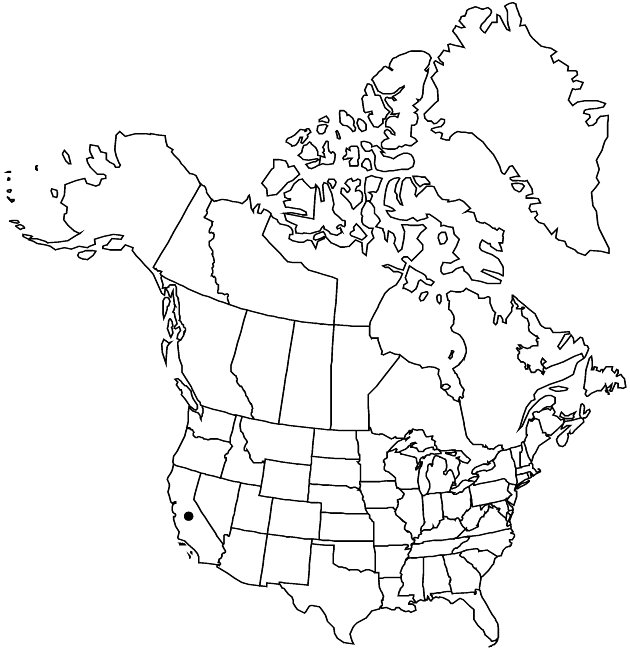Difference between revisions of "Chaenactis parishii"
Proc. Amer. Acad. Arts 20: 299. 1885.
FNA>Volume Importer |
FNA>Volume Importer |
Revision as of 18:45, 24 September 2019
Subshrubs, (10–)20–40(–60) cm (not cespitose or matted); proximal indument (especially of stems) persistent, whitish, densely lanuginose or pannose. Stems mostly 5–15+, erect. Leaves mostly cauline, (1–)2–5 cm; largest blades lance-ovate or deltate, ± plane, 1-pinnately lobed; lobes mostly 2–5 pairs, remote, ± plane. Heads mostly 1–3 per stem. Peduncles ascending to erect, 2–8(–20) cm. Involucres ± obconic. Phyllaries: longest 10–13 mm; outer predominantly arachnoid to closely lanuginose (sparsely, if at all, stipitate-glandular), apices ± squarrose, pliant. Corollas 7–8.5 mm. Cypselae 4–7 mm; pappi: longest scales 6–8 mm. 2n = 12.
Phenology: Flowering May–Jul.
Habitat: Open rocky to sandy soils in low montane chaparral
Elevation: 1300–2500 m
Distribution

Calif., Mexico (Baja California).
Discussion
Of conservation concern.
Chaenactis parishii is sometimes cultivated in rock gardens. It is known from small, isolated populations in the higher Peninsular Ranges of Riverside and San Diego counties and adjacent Baja California. Chaenactis parishii and C. suffrutescens form a species pair well marked by the (usually) subshrubby habit, proximal indument persistent, white, felty, heads relatively large, and largest leaf blades lance-ovate to deltate.
Selected References
None.